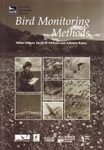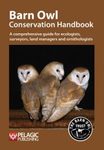![Limnology and Aquatic Birds Limnology and Aquatic Birds]()
Click to have a closer look
About this book
Contents
Customer reviews
Related titles
About this book
The importance of habitat conservation for the protection of birds has become widely acknowledged and accepted by natural resource managers and the general public. Papers presented in Limnology and Aquatic Birds further our understanding of the important role that limnology has in determining habitat suitability for waterbirds. Long-term population monitoring of waterbirds is an important tool in our quest to understand the role waterbirds play in their environment. Continued population declines of many species of aquatic birds indicate the need for additional understanding of how human activities negatively impact water quality and bird populations and what mitigative actions can be taken.
The main objective of the Working Group on Aquatic Birds of the International Limnological Society (SIL) is to integrate waterbirds into hydrobiology and treat waterbird studies in a limnological context. To achieve this goal, the Working Group organizes conferences to facilitate communications among limnologists interested in aquatic birds and ornithologists interested in the aquatic habitat. The efforts of the SIL Working Group on aquatic birds has resulted in a new emphasis on the links between aquatic birds and their environment.
Limnology and Aquatic Birds is international in scope and presents information on species as diverse as common loon, harlequin duck, and semi-palmated sandpiper, and locations ranging from Iceland to Japan.
Contents
- In Memoriam: Stuart Frederick Mitchell BSc (Hons), PhD 25 September 1940 - 10 August 2001
- Aquatic Birds - Foraging, Community Ecology and Limnology
- A comparison between aquatic birds of lakes and coastal rivers in Florida
- Foraging guilds of aquatic birds on productive boreal lakes: environmental relations and concordance patterns
- Water bird guilds and their feeding connections in the Bodrogzug, Hungary
- Effects of small-bodied fish on invertebrate prey and foraging patterns of waterbirds in Aspen Parkland wetlands
- A comparison of three methods to investigate the diet of breeding double-crested cormorants (Phalacrocorax auritus) in the Beaver Archipelago, northern Lake Michigan
- Pattern of natural 15N abundance in lakeside forest ecosystem affected by cormorant-derived nitrogen
- Waterfowl - Habitat Use, Foraging Behaviour and Limnology
- Temporal processes and duck populations: examples from Myvatn
- Effects of water quality on habitat use by lesser scaup (Aythya affinis) broods in the boreal Northwest Territories, Canada
- Diurnal time-activity budgets of redheads (Aythya americana) wintering in seagrass beds and coastal ponds in Louisiana and Texas
- Foraging behavior of redheads (Aythya americana) wintering in Texas and Louisiana
- Macroinvertebrate abundance, water chemistry, and wetland characteristics affect use of wetlands by avian species in Maine
- Breeding waterbird wetland habitat availability and response to water-level management in Saint John River floodplain wetlands, New Brunswick
- Populations of ducks and trout of the River LaxA, Iceland, in relation to variation in food resources
- Influence of migrant tundra swans (Cygnus columbianus) and Canada geese (Branta canadensis) on aquatic vegetation at Long Point, Lake Erie, Ontario
- Loons - Population Trends, Behaviour, Habitat Use and Ecotoxicology
- Factors influencing productivity of common loons (Gavia immer) breeding on circumneutral lakes in Nova Scotia, Canada
- A landscape-scale model of yellow-billed loon (Gavia adamsii) habitat preferences in northern Alaska
- Testing hypotheses of social gatherings of common loons (Gavia immer)
- Feeding behavior and modeled energetic intake of common loon (Gavia immer) adults and chicks on small lakes with and without fish
- Assessment of mercury exposure and potential effects on common loons (Gavia immer) in Quebec
- Bioaccumulation of mercury in yellow perch (Perca flavescens) and common loons (Gavia immer) in relation to lake chemistry in Atlantic Canada
- Shorebirds - Habitat Use, Limnology and Trophic Dynamics
- Shorebirds, snails, and the amphipod (Corophium volutator) in the upper Bay of Fundy: top-down vs. bottom-up factors, and the influence of compensatory interactions on mudflat ecology
- Trophic structure and avian communities across a salinity gradient in evaporation ponds of the San Francisco Bay estuary
- Spatial and temporal fluctuations in presence and use of chironomid prey by shorebirds in the Odiel saltpans, south-west Spain
- Anostracans and microcrustaceans as potential food sources of waterbirds on sodic pans of the Hungarian plain
Customer Reviews






























![Ageing & Sexing of Migratory East Asian Passerines [English / Chinese]](http://mediacdn.nhbs.com/jackets/jackets_resizer_medium/25/250760.jpg?height=150&width=115)
















